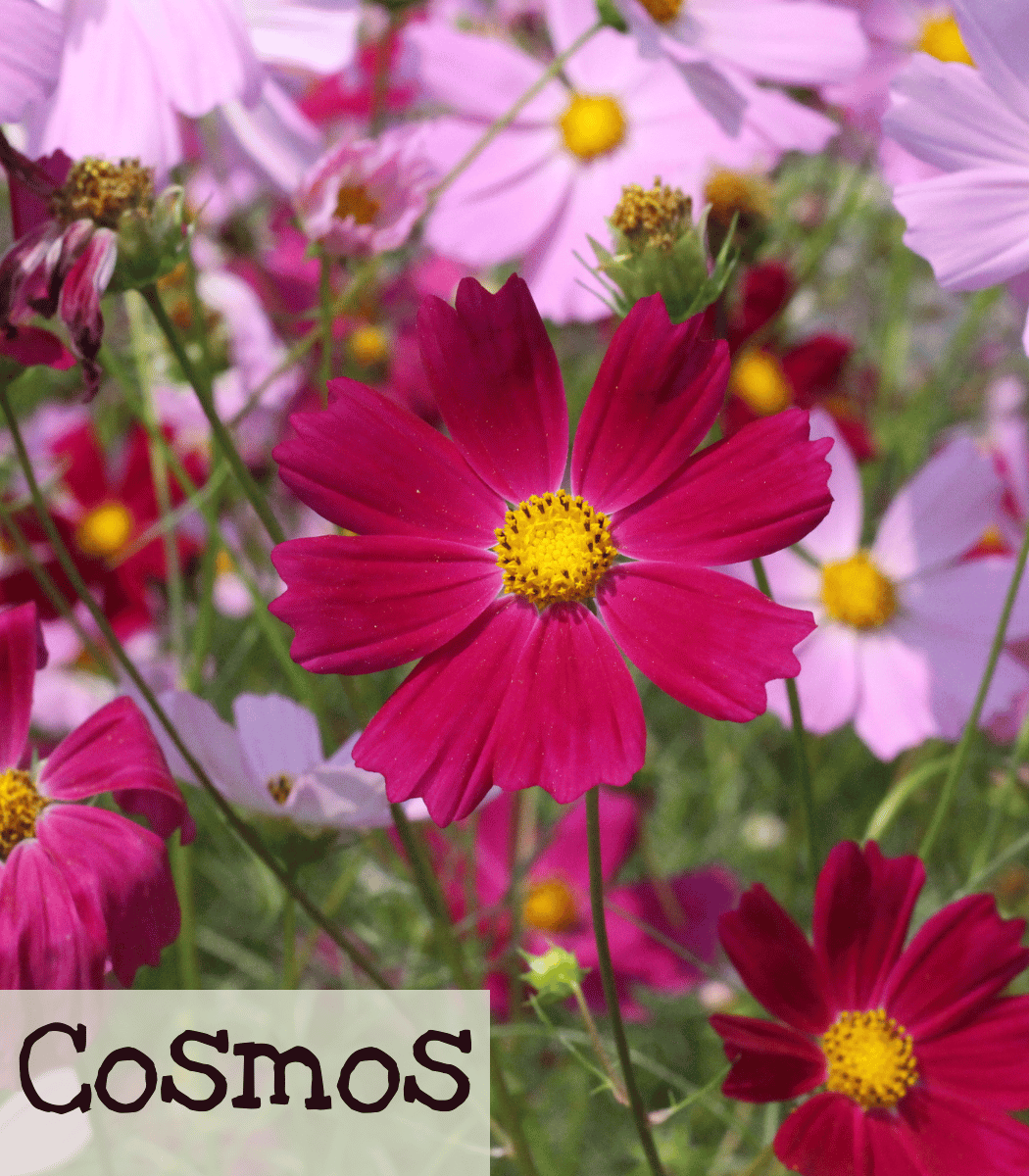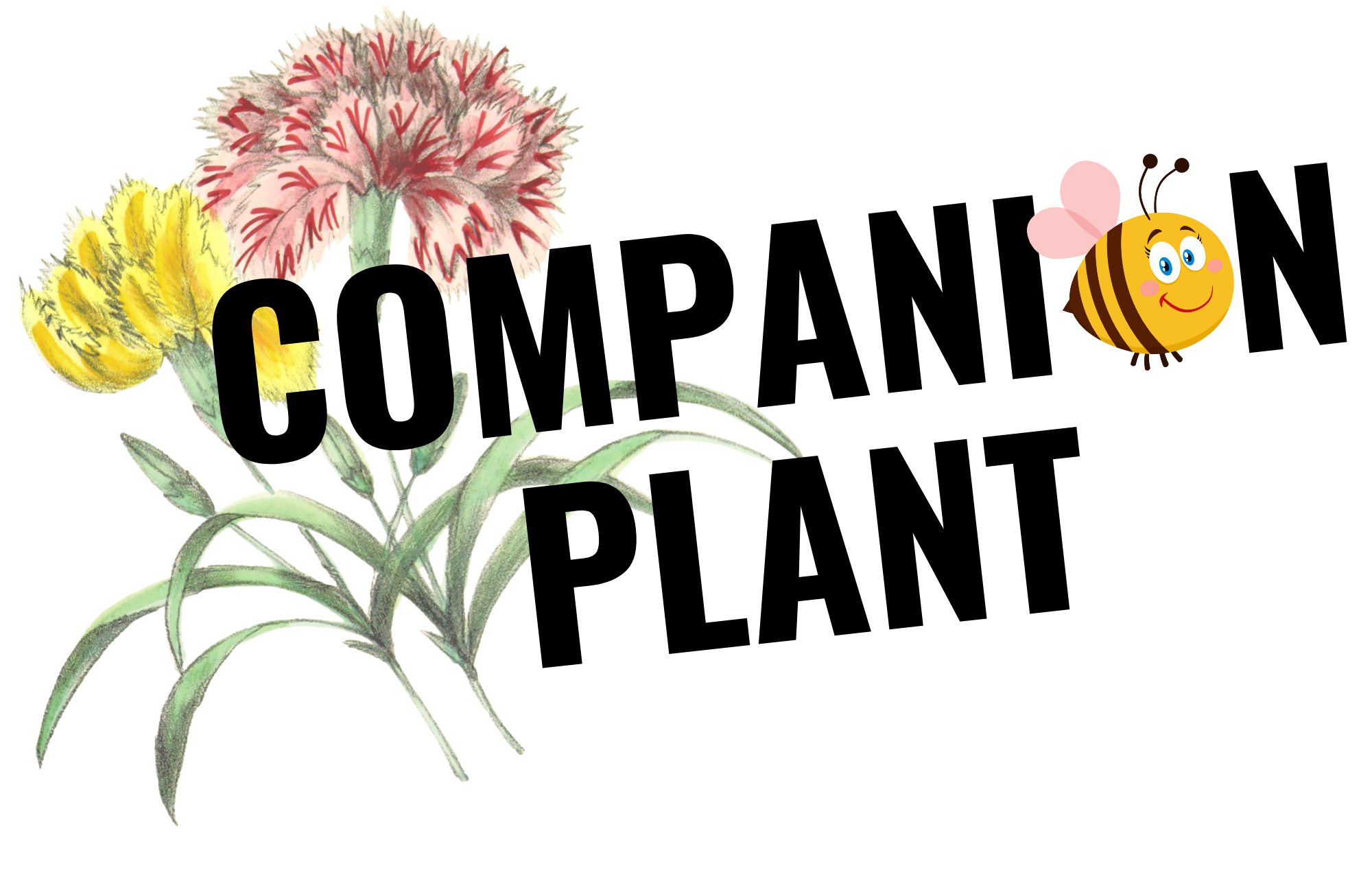
Cosmos
Cosmos come in an array of colors and is a good nectar source for many pollinators. Cosmos isn’t just another pretty flower, it is a good ‘working’ flower. Plant in vegetable gardens as a companion plant to help control pests! They attract many predators that will eat pests such as aphids, caterpillar eggs, squash vine borers, Japanese beetles, and MANY more!
|
Bright Lights; Sensation Mix |
|
Cosmos sulphureus: (Edible) Bright Lights Cosmos bipinnatus: (NOT edible) Sensation |
|
Easy |
|
Intermediate |
|
5 years if properly stored. |
|
Annual |
|
7-10 days |
|
None |
|
1/4 inch |
|
|
|
Full sun |
|
Summer to fall |
|
April and May |
|
Yes |

Growing Tips



3-4 plants per 20” container
When to Start
Direct Sow: After the danger of frost has passed. (May 1 for Jefferson, GA)
Direct sow seeds into full sun beds and in average soil to a depth of 1/4 inch. Keep the soil moist but not soggy. Thin to 8-10’’ apart. You can also start indoors about 6-8 weeks before the last frost. (March for Jefferson, GA) Start indoors like other plants. Use sterile, pre-moistened seed starting mix and sow to a depth of 1/4 inch into cells or pots. Place the cells or pots under grow lights. Pot them up as need and then harden off before transplanting after the dander of frost has passed.
Care
Taller varieties need staking. You can plant them in areas that are protected from the wind and you might get away with them not needed support.
Cosmos likes hot dry conditions. Dead-head plant to encourage more blossoms until you are ready for it to go to seed. Flowers bloom summer-fall and are good-cut flowers.
My personal experience
I like to start my cosmos indoors since I’m using it as a companion plant. As it seems to take a bit of time before it blooms, starting it indoors gives me a few weeks’ head start. I want it to be booming as soon as possible for it to attract the beneficial predators that will help control the pests with which I struggle. It attracts a good variety of beneficials to my garden.
I like to plant it at the ends of my okra rows as it does require staking. It usually towers over me and as the okra also gets tall, I can use it to help stake the plants when they get huge. I do have to do some pruning of the branches to keep it more contained in the raised bed.
My cosmos, sea shell mix, is pictured to the right. If it was planted in the ground, it would be at tall as me. (Almost 6 feet) It was particuarly happy this year! Growing in the raised bed it towers over me.

Seed Saving

Isolation Distance
Insect dependent for pollination. Isolate 1/4 mile to prevent cross-pollination.
Instructions
Select healthy, robust plants free of any signs of disease or insect infestation for seeds. Seeds carry the traits of the parent plant. Choose plants that exhibit the traits you wish to preserve. Consider bloom size, color, and shape, as well as blooming time.
Allow the biggest and healthiest blooms to mature on the plant. Cover the seed head with a fine-mesh bag as soon as the flower petals shrivel and die. Use an elastic band to hold the bag in place. This prevents seeds from spilling onto the soil before harvest.
Clip the flower head from the main stem once the seeds are dry and dark. Separate plant debris from the seeds by removing the mesh bag and placing the flower head in a paper bag and shaking to loosen the seeds. Seeds settle to the bottom of the bag. Remove plant debris by hand.
Features
- Only Cosmos sulphureus (the bright orange and yellow varieties) are edible
- Companion plant
- Attracts pollinators
- Good cut flowers
- Poor soil tolerant
- Bright Lights: Good for cutting. Flowers are orange, red, and yellow.
- Sensation Mix: Heirloom. A versatile plant that thrives in almost any climate and soil condition. Also, a good cut flower!

Make sure you know the scientific name for the varieties of cosmos you are eating. Only Cosmos sulphureus (the bright orange and yellow varieties) are edible. The whole plant of Cosmos sulphureus can be consumed.
Good companion plant. Helps control the pest population by attracting predators (good insects) that eat pests. See Pest Management for more details.
Sources:
Edible Flowers: How, Why, and When We Eat Flowers by Monica Nelson
Gardenguides.com
Starting and Saving Seeds By Julie Thompson-Adolf
